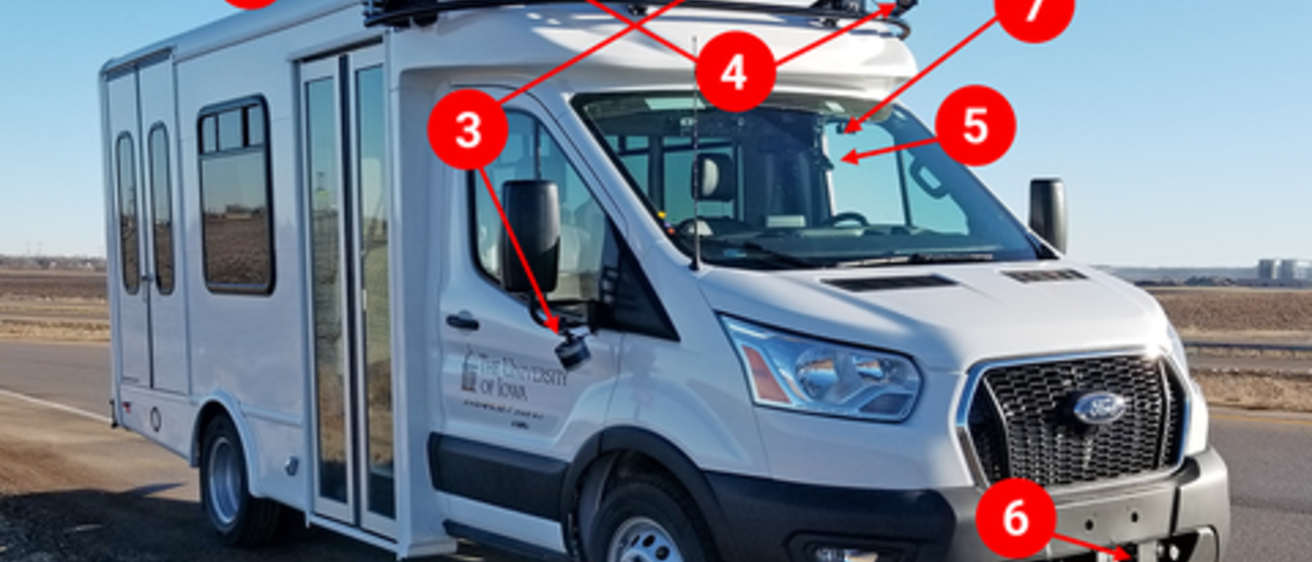Since our last project update, most of the automated driving equipment has been installed on our vehicle. Our partners at AutonomouStuff near Peoria, Illinois, have been hard at work, where they are continuing to install a few last pieces of hardware and software, and they will soon be onto multiple rounds of testing.
Labels for each type of sensor:
- 5.9 GHz Dedicated Short-Range Communications (DSRC) antenna
- GPS antenna: This works to identify the location of our vehicle within a high-definition map of our route.
- LiDARs (Light Detection and Ranging): Multiple LiDARs on the front and rear of the vehicle use scanning laser light to sense the environment around it and detect objects
- High-definition cameras (in waterproof housings): Used to detect traffic light states (color of traffic light) at signaled intersections
- Mobileye 630 collision avoidance system (interior)
- Long range radars: Yet another way to detect objects, radars use radio waves to detect objects.
- Webcam video camera (interior, front and rear)
As you can see, there are multiple types of sensors that all detect objects around the vehicle to keep drivers, pedestrians, and other road users safe. They detect and identify objects that are on or near the road, and then they tell the vehicle how to respond: for example, to slow down or steer to avoid an object, or when it’s safe to accelerate.
And that’s not all: There is more technology being installed inside the vehicle, most of it behind panels that the average rider will never see. All of these systems work together to allow the vehicle to see what’s around it and then respond accordingly.
We’ll go into more detail on how these technologies work in future updates.
For more info visit the NADS website.
